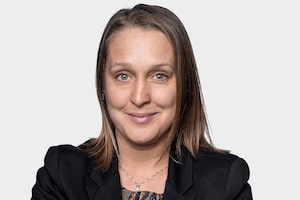You might like the sound of them, but how much do you really know about the tax-free savings account?
Despite widespread public interest, a new poll has found that most Canadians have yet to open a TFSA, in part because they still lack knowledge about how they work.
A Mackenzie Investments TFSA test, conducted in December by Leger Marketing, asked 1,506 adult Canadians five basic true or false questions about Canada's newest investment account. Of those polled, 44 per cent answered three or more correctly, 8 per cent answered all five questions correctly and 28 per cent got them all wrong. Among those aged 18 to 24, only 3 per cent answered all five questions correctly.
. Weigh in on whether you would stash some extra money into an RRSP, RESP or a TFSA.
Want to see how you stack up? Here are the five true or false questions in the Mackenzie survey. (The answers at the bottom of this story.)
1. Like an RRSP, contributions to a TFSA are tax-deductible. 2. The TFSA contribution limit is currently $5,000 per year. If you don't contribute the full $5,000 in a year, the remaining contribution room is lost. 3. TFSA contribution room does not depend on earned income. Regardless of income level, all Canadians age 18 or older will receive $5,000 of TFSA contribution room each year. 4. A broad range of investment options are available within a TFSA including stocks, bonds and mutual funds. 5. An individual can own multiple tax-free savings accounts.
Introduced by the federal government on Jan. 1, 2009, TFSAs allow people to save or invest $5,000 a year for any purpose - retirement, education or a rainy-day fund - without paying tax on investment or capital gains when the money is withdrawn.
TFSAs have garnered attention because of their tax-free status, but studies suggest there is still confusion among Canadians as to how they function. Although you can use your TFSA to invest in GICs, mutual funds, stocks and bonds, most of the assets going into them are being parked in savings accounts, which pay minimal interest.
In the first six months of 2009, roughly 3.6 million Canadians opened a TFSA, stockpiling wealth of $12.4-billion, according to an analysis by Toronto-based financial research firm Investor Economics and pollster Ipsos Reid. Year-long data is not yet available.
|
Five things you should know about TFSAs:
|
The Mackenzie Investments survey found that 68 per cent of respondents haven't opened a TFSA. When asked why, 59 per cent cited a lack of money while 42 per cent said it's because they don't know enough about them.
Here are the correct answers, as well as the percentage of those who answered correctly: 1) False: 43% of respondents got this right 2) False: 36% got this right 3) True: 63% got this right 4) True; 41% got this right 5) True; 22% got this right
 Roma Luciw
Roma Luciw